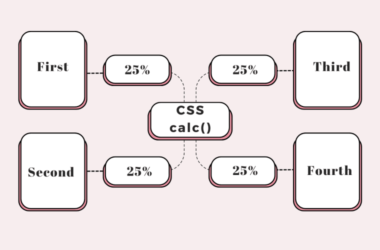Efficient RAG for Mixed Context Texts with Indexify’s Framework, Gemini’s 1M Context & Arctic’s Embeddings

Retrieval-augmented generation (RAG) systems have become the most popular method for response synthesis with LLMs from non-parametric information. Despite how impressive current RAG systems are, they struggle to process large mixed-context texts. There are issues with chunking algorithms and inherent problems with mixed context information, no matter the medium.
The Complexity of Mixed Context Texts
Mixed-context texts, such as research papers, technical documents, or even web pages, often contain cross-domain information. A single document might include information from physics, chemistry, biology, and computer science throughout its content. This heterogeneous nature of the text poses a challenge for RAG systems, which rely on identifying and retrieving relevant information to generate accurate responses.
Chunking algorithms divide data into smaller, more workable parts. Chunks are based on tokens, and their size and effectiveness are governed by the model and task you’re trying to perform. However, these chunks don’t consider the semantic coherence of the information. As a result, in a mixed context, text-generated chunks often contain irrelevant information, and sentences are mashed together with no regard for their content. This wastes valuable tokens as these chunks are passed to subsequent API calls to Large Language Models (LLMs), which often have limited context lengths.
LLM Assisted Restructuring for RAG (LLMARRAG) Pipeline
We recognized the need for faster and more accurate approaches to processing mixed context texts in RAG systems. To remedy this problem, we developed an innovative pipeline that addresses these limitations.
When it comes to tackling mixed-context text we propose the following workflow:
- Data Extraction — Fast real-time text extraction from any data source
- Text Restructuring — Semantic restructuring to increase information density
- Enhanced Chunking — Producing relevant and information-dense chunks
- Embedding Creation — High-quality embeddings for your chunks
Building Robust Pipelines for RAG Applications with Indexify
We are demonstrating the implementation of the LLMARRAG algorithm using our open-source real-time extraction workflow engine, Indexify. While most developer tools provide different APIs or simply handle a single modality, we have developed a fast multi-modal extraction engine and a collection of robust pre-built extractors to make it easy to extract text from any data source. Some examples are Marker (OCR-based PDF to Text), ASRDiarization (Audio to Text with Diarization), and PDF-Extractor (Non-OCR PDF to Text, Tables and Images). Besides multi-modality, we get out-of-the-box scalability and reliability for workflows meant for processing data for RAG applications in production.
1. Data Extraction with Robust Extractors
The first step in the pipeline is to extract text from various sources like PDF files, video, audio, or text documents.
2. Text Restructuring with Gemini 1.5 Flash LLM
The extracted text requires restructuring to enhance processing and retrieval efficiency. We can use Google’s recently unveiled state-of-the-art Gemini 1.5 Flash LLM. The Gemini 1.5 Flash LLM boasts an impressive 1M context length, making it ideal for processing large mixed-context texts. We will use Gemini to restructure the entire text of a document to group sentences from similar topics together. We package Gemini as an extractor in Indexify to be able to use it in real-time extraction pipelines.
Semantic restructuring ensures that relevant information is placed together, creating topic-coherent segments within the text. By presorting subject-specific text content together, we get more accurate and efficient chunking throughout the rest of our pipeline. The restructuring process eliminates chunking inefficiencies before chunks are passed to API calls and ensures users aren’t wasting their time or their tokens.
3. Enhanced Chunking with RecursiveCharacterTextSplitter
With the text restructured into topic-coherent segments, our pipeline performs chunking using the RecursiveCharacterTextSplitter algorithm. This algorithm has been designed to handle large texts and create meaningful chunks based on a specified size.
Thanks to the intelligent restructuring performed in the previous step, the RecursiveCharacterTextSplitter can now generate chunks that are more information-dense and domain-specific. This optimization ensures that the LLMs receive relevant and digestible input, enabling them to generate more accurate responses using fewer resources.
4. Embedding Creation with Snowflake’s Arctic Model
The final step in our pipeline is creating embeddings using Snowflake’s Arctic embedding model. Embeddings enable efficient similarity search and retrieval of relevant information from the chunked text. Snowflake’s Arctic model is a leading embedding model that accurately captures the semantic meaning of text chunks. By representing each chunk as a high-dimensional vector, the Arctic model allows for fast and precise similarity comparisons between the query and the available chunks.
These embeddings serve as the basis for retrieving the most relevant chunks when a user poses a question to the RAG system.
Creating LLMARRAG Pipeline is Simple with Indexify
Install Indexify, Start the Server & Download the Extractors
!pip install -q -U indexify indexify-extractor-sdk
curl https://getindexify.ai | sh
./indexify server -d
!indexify-extractor download hub://pdf/marker
!indexify-extractor download hub://text/llm
!indexify-extractor download hub://text/chunking
!indexify-extractor download hub://embedding/arctic
!indexify-extractor join-server
Create a Client, Define Extraction Graph & Ingest Contents
from indexify import IndexifyClient
client = IndexifyClient()
from indexify import ExtractionGraph
extraction_graph_spec = """
name: 'llmarrag'
extraction_policies:
- extractor: 'tensorlake/marker'
name: 'mdextractor'
- extractor: 'tensorlake/llm'
name: 'txtprocessor'
input_params:
service: 'gemini'
prompt: 'Rearrange and rewrite the following text by grouping similar topics together while preserving the original sentences.'
content_source: 'mdextractor'
- extractor: 'tensorlake/chunk-extractor'
name: 'chunker'
input_params:
chunk_size: 1000
overlap: 100
content_source: 'txtprocessor'
- extractor: 'tensorlake/arctic'
name: 'embedder'
content_source: 'chunker'
"""
extraction_graph = ExtractionGraph.from_yaml(extraction_graph_spec)
client.create_extraction_graph(extraction_graph)
client.upload_file("llmarrag", "random_topics.pdf")
The Impact of LLMARRAG Pipeline
LLMARRAG has the potential to rethink the way RAG systems process mixed context text.
The extraction and pipeline engine used in this post, Indexify, is able to quickly set up nimble and dynamic extraction pipelines that directly address the complexities of mixed context text, which offers several key benefits:
- Efficient Processing: LLMARRAG enables RAG systems to better process mixed context texts by intelligently restructuring the text and performing enhanced chunking. The topic-coherent segments and information-dense chunks allow for more resource-efficient processing, saving computer resources and tokens.
- Improved Accuracy: By retrieving the most relevant chunks for a given query, the LLMs can generate more contextually appropriate and precise responses, enhancing the output’s overall quality.
- Scalability: Indexify’s pipeline is designed to handle large mixed-context texts effectively. With the Gemini 1.5 Flash LLM’s 1M context length and the efficient chunking algorithm, our solution can scale to process extensive documents and datasets, making it suitable for any project.
- Flexibility and Customization: As an open-source data framework, Indexify allows users to customize and extend the pipeline according to their specific needs. You could easily extend the pipeline to customize how text is extracted, such as using Google’s PDF Extraction model instead of marker.
Benchmarking
https://medium.com/media/2d4a302a63bb349270927067ce424caa/href
Conclusion
By combining robust data extraction, intelligent text restructuring with Gemini 1.5 Flash LLM, optimized chunking using RecursiveCharacterTextSplitter, and accurate similarity search powered by Snowflake’s Arctic embeddings, the LLMARRAG pipeline enables efficient, accurate, and scalable processing of large, heterogeneous documents. This approach redefines the capabilities of RAG systems, ensuring they can handle mixed context texts with greater efficiency
and precision.
Indexify, as an open-source data framework, empowers developers to create customized, high-performance RAG systems for various applications, democratizing access to advanced natural language processing capabilities and paving the way for more accurate and efficient AI-powered solutions across all domains.
Do you have any ideas about where we should go or what we should build next?
Join our Discord to connect with us directly and build the future of open-source data processing for Generative AI with us!
Indexify’s website — https://getindexify.ai
Stay in touch with us by following us on Twitter and LinkedIn!
Efficient RAG for Mixed Context Texts with Indexify’s Framework, Gemini’s 1M Context & Arctic’s… was originally published in Google Developer Experts on Medium, where people are continuing the conversation by highlighting and responding to this story.





